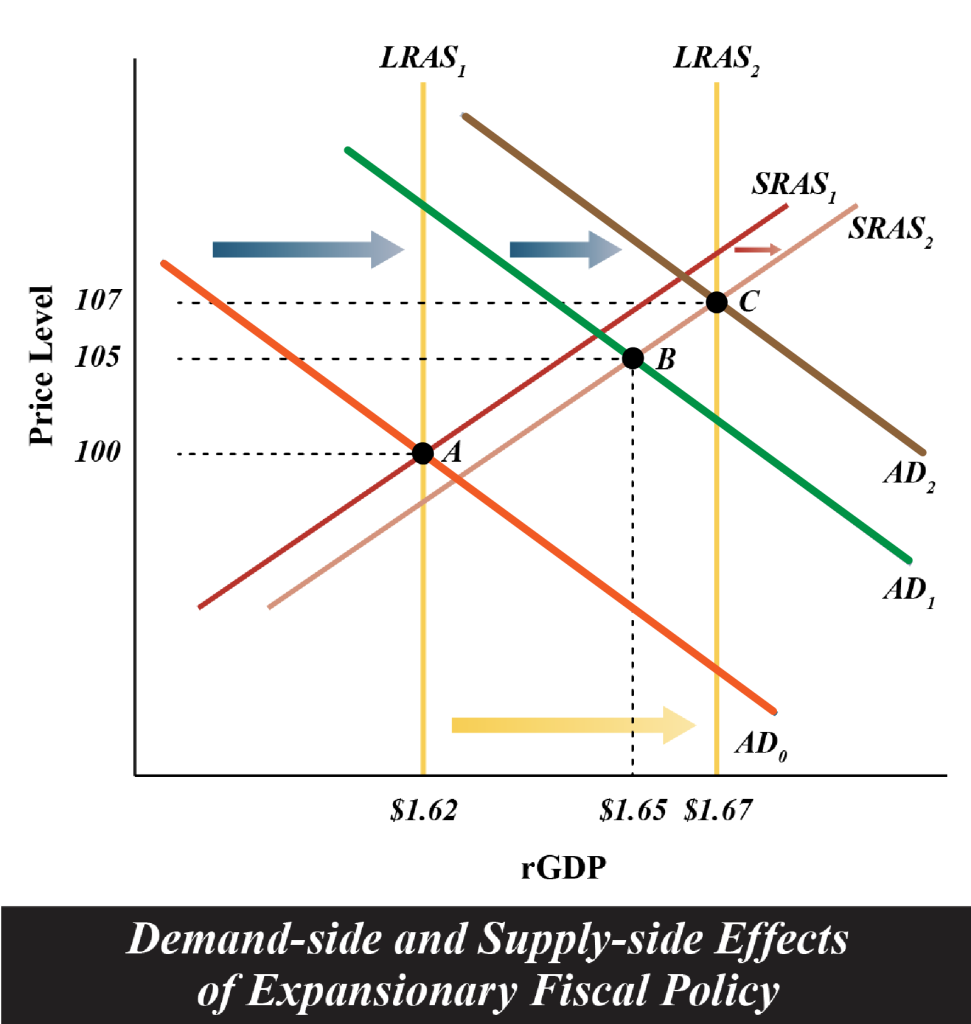12.6 Supply-Side Effects of Fiscal Policy
In section 12.1 above, the fiscal policy tools emphasize the effects of the measures on the demand side of the economy, such as an increase in [latex]G[/latex] or a reduction in taxes, which increases aggregate demand and real GDP. The fiscal policy on the supply side of the economy has important effects on the demand side. Suppose the government lowers corporate tax rates. This would increase firms’ net profitability and, in turn, provide them with a greater incentive for capital formation, which tends to increase productivity. To a large extent, labour productivity depends on workers’ access to capital. Productivity growth brings an increase in short-term aggregate supply ([latex]SRAS[/latex]) as well as long-run aggregate supply ([latex]LRAS[/latex]) or potential GDP. Similarly, an increase in [latex]G[/latex] towards Research and Development (R&D) also increases long-term economic growth by stimulating productivity. Similarly, when the government lowers capital gains taxes, that stimulates people's incentive to save and invest (in the financial markets, such as on bonds and securities), which tends to increase capital formation that is, in turn, used by private businesses to improve productivity.
On the contrary, a higher income tax rate, such as raising the marginal tax rate, reduces people’s incentive to work, which affects labour productivity. Lower productivity affects businesses negatively and, at the same time, reduces their incentive to future investments and production. These affect an economy’s short and long-term supplies or productive capacities. Higher-income tax rates could also increase tax evasion and underground economic activities. Similarly, a rise in capital gains tax reduces people’s incentive to invest in the capital markets and tends to decrease capital formation. So many people believe that saving and investment could be encouraged through lower taxes, which stimulates the supply side of the economy.

Fig 12.10 above shows the demand-side and supply-side effects of an expansionary fiscal policy where we see that if the government lowers corporate taxes, [latex]AD[/latex] increases through larger investment expenditure as firms’ net earnings increase. At the same time both short and long run [latex]AS[/latex] also increase through greater productivity from capital creation (Both [latex]SRAS[/latex] and [latex]LRAS[/latex] curves shift rightward). The economy moves from full employment point [latex]A[/latex] to a full employment level of output at [latex]C[/latex], where real GDP increases and the price level also rises.

